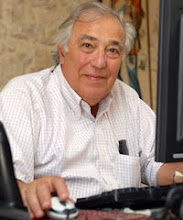
It’s always interesting to see how old wines behave, to assess their resistance against the passage of time or to witness their maturity. It’s also a rare opportunity to be able to take a sounding, to get a fix on a vineyard’s profile at a given point in time, to reveal underlying trends, to analyse the consequences of intervening changes over a long period in the vinification or cultivation techniques and to measure their impact on the wine with hindsight.
I can’t resist the urge to share our last great tasting with you: 33 Lynch Bages vintages, from 1959 to 2006. It was last Tuesday, after bringing in the Merlot harvest and before the Cabernets.
The wines were served blind, in flights of five and beginning with the oldest vintages. In each flight, the tasters knew the five vintages being served, but not the order in which they were presented. It’s a system I quite like, as it protects the anonymity of the vintages while maintaining a certain progression in the tasting order. Guaranteed surprises…
It was a wonderful day. It showed us that thanks to its terroir and the quality of its grapes, Lynch-Bages gives birth to wines of great consistency and possessing a highly distinctive style of their own. One participant in the tasting found that the terroir, because of its intrinsic quality, somewhat erased the vintage effect. Indeed, we were all struck by the resilience of some years considered to be minor or fairly average: 1984, 1987, 1993 etc. to cite but a few, which are drinking wonderfully today. And yet, despite everything, the great vintages remained great vintages. The 1959, 1989 and the 2000 were the three years in this lovely flight that have peaked for me.
I would very simply add that the emotion I have for these wine tastings as they were developed in their time by my grandfather, my father or by the team I brought together beginning in 1974, brilliantly led by Daniel Llose, moreover is a living part of the tasting. This was a time for us to share our memories, our satisfactions as well as the problems we’ve had to solve. Looking back, we realised how many things, from the vine to the wine warehouse, are now better managed, better understood, and how advances in modern viticulture and oenology have facilitated our work.
The style of the wines came shining through. Vinified by my grandfather, Jean-Charles Cazes, the Lynch Bages wines distinguished themselves very early on by their deep colour, their ripe tannic structure and their hedonistic character, at a time when wines were often presented as more austere. The vintages vinified by André Cazes (notably 1966 and 1970) and later on by the team I had formed with Daniel Llose, will serve to confirm this style. Thanks to the advice of Emile Peynaud, the style became more refined in the 70s. The wines increased in their suppleness and roundness. From the 1980s to today, Lynch Bages wines show a remarkable consistency. They confirm, vintage after vintage, the hedonistic character that made their reputation.
By clicking on http://www.farrvintners.com/blog.php?blog=26, you can see the tasting notes of Stephen Browett, of Farr Vintners. I thank him for having taken the trouble to write them. They are complete and detailed. Even if on some points they diverge somewhat from what I might have written, they closely resemble my own assessments and well reflect the overall impression of the participants.

No comments:
Post a Comment